This article was medically reviewed by Shari Forschen, NP, MA. Shari Forschen is a Registered Nurse at Sanford Health in North Dakota. Shari has worked in healthcare since 1996 and her expertise lies in acute care bedside nursing on a medical oncology floor. She received her degree from Medcenter one College of Nursing in 2003 and her Family Nurse Practitioner Masters from the University of North Dakota in 2014. Shari is a member of the American Nurses Association.
wikiHow marks an article as reader-approved once it receives enough positive feedback. In this case, 85% of readers who voted found the article helpful, earning it our reader-approved status.
This article has been viewed 47,259 times.
Coughs that contain phlegm are called productive coughs, chesty coughs, or wet coughs. Phlegm is generally a sign that there is inflammation or an infection. If you find yourself experiencing a wet cough, be particularly aware that you may need to be evaluated by a physician to rule out a serious infection like pneumonia.
Steps
Using Common Remedies
-
1Get rest. Since wet coughs generally point to infection or inflammation, it is important that you get rest. This helps you get better and reduces the risk of spreading germs.
- Take a sick day from work or school to rest your body as well as keep yourself from spreading your infection.
-
2Breathe humid air. Use a vaporizer or humidifier to make the air in your home more humid. If you don't have these things, take a hot shower or boil water on the stove.
- If you take a hot shower, close the bathroom door to trap the steam inside. This can help you breathe better because it helps loosen congestion.
Advertisement -
3
-
4Eat nutritious meals. When you are feeling sick, eat small meals full of food that are easily digestible. Foods to avoid are those high in fiber and fat. Also make sure you eat often. This gives your body a continuous energy supply, which helps your immune system fight infection.[3]
- Eat quality proteins, like fish and poultry, as well as eggs and complex carbohydrates.
-
5Use a menthol rub. Ointments that contain camphor and menthol provide relief for coughs. They act as expectorants, which leads to a decreased cough. Try Vick’s VapoRub, Mentholatum, or a similar topical ointment.
- Rub a small amount onto your chest and around your nose. The smell and exposure to the menthol will help loosen your cough.
-
6Go to the doctor. If these treatments don’t give you any relief within five to seven days, make an appointment to see a physician. You may be dealing with a more complicated situation.
- If your phlegm is a greenish-yellow, you are wheezing, or you hear a whistling sound, you may want to see a doctor. If you experience these symptoms along with a fever, you need immediate treatment.
- These treatments can be used along with pain relievers, antibiotics, and other treatments. If you are already seeing a physician, continue with those treatments along with steam treatments.
Taking Natural Herbal Expectorants
-
1Choose an expectorant herb. Expectorant herbs help make it easier to cough up phlegm. Depending on the way you choose to use them, you can use essential oils or dried herbs. These essential oils or dried herbs have antibacterial, antifungal, or antiseptic properties in addition to the expectorant properties, meaning they can kill bacteria and other microorganisms that can infect the sinuses. Expectorant herbs include:
- Eucalyptus
- Elecampane (Inula)
- Slippery Elm
- Fennel seed
- Camphor
- Garlic
- Hyssop
- Lobelia
- Mullein
- Thyme
- Spearmint and Peppermint
- Ginger
- Cayenne pepper and black pepper
- Mustard seed
-
2Make a tea. Tea is a great way to ingest expectorant herbs to reduce your cough. Measure out one teaspoon of your dried herb of choice or three teaspoons of fresh herb. Steep the herb in one cup of boiled water. Let it steep for five to ten minutes.
- Drink four to six cups a day.
- Add honey and lemon to taste. They both have antiviral and antibacterial properties that can also help soothe your cough. Do not give honey to children under one year old.
- Cayenne pepper, black pepper, garlic, onions, and mustard seed tend to be strong and can be irritating. If you make teas with these herbs, drink them slowly.
- If you are giving these teas to a child, cut the amount of herb by ½ or increase to two cups of water.
-
3Try steam therapy. Inhaling steam helps get the dried herbs into the lungs. It also helps open up the nasal passages and thin out the mucus. You can use either the dried herbs or the essential oils of many of these herbs. Both can be effective and depend on your preferences and what you have available.[4]
- Add one to two drops of any essential oils made from expectorant herbs or one to two teaspoons of the dried herb to boiling water. Start with one drop per one quart of water. Once you add the herbs, boil for another minute, turn off the heat and move the pot to a comfortable area.
- Drape a cotton towel over your head and hold your head over the steaming pot. Keep your face at least 12 inches away from the water to avoid scalding yourself. Close your eyes, and breathe in through your nose and out through your mouth for five counts, and then in and out through your mouth for two counts. Repeat for 10 minutes or as long as the water is still steaming.
- You can do this every two hours.
- To any herbal steam treatment listed, you can add a tiny pinch of cayenne pepper or black pepper. Make sure to only add a very small amount because they may be too irritating for your respiratory system.
Using Coughing Treatments
-
1Use a controlled cough. A good way to make yourself cough up when you have a wet cough is through controlled coughing. Start seated in a comfortable place with both feet on the floor. Cross your arms over across your abdomen, breathing in slowly through your nose. Lean forward and press your arms against your abdomen. Cough two to three times in sharp, short bursts. The second and third cough should loosen the phlegm enough to cough it out. Spit it out.
- Breathe in again through your nose so the mucus will not move back down your throat.
- Rest a moment, then repeat the process if you still have mucus.[5]
-
2Try the huff cough. Start sitting down with your chin slightly raised. Breathe in slowly using your diaphragm instead of your chest. Hold your breath for two to three seconds, then let it out in a sharp burst of air through your mouth. Repeat two to three times, then breath normally for a few breaths. Make yourself cough once you feel enough phlegm build up in the back of your throat.
- It usually takes three to five cycles of huff breathing to clear enough mucus.
- The stronger the breath, the more mucus you will push out.
- Don't overtire yourself.[6]
-
3Loosen mucus with chest physical therapy (CPT). Chest physical therapy is a method helpful for everyone from children to adults that loosens mucus stuck to the lungs. This requires a partner, so get someone to help you. Start with the congested person lying down with her chest raised about 45 degrees. Using a cupped hand, gently tap your hand on the area between the nipple and collarbone on the left side of the chest. Continue to tap your hand, using gentle but firm pressure, for two minutes. Repeat on the same area on the right side of the chest. To help clear the rest of your lungs, repeat the cupped hand tapping on:
- Over the shoulder blade on the left and right side of the back, after moving to a seated position leaning over a pillow in your lap
- On the front sides on the left and right while lying flat on the back
- On the sides on the left and right, while alternating lying on both sides with the arms over the head
- On the upper back above the edge of the ribs on both sides, while lying flat on the stomach
- You will cough during and for up to two hours after CPT. This is common and lets you know it's working.
- This technique is often used with children and adult with cystic fibrosis.
Warnings
- Chesty coughs place the patient at risk for developing a bacterial infection. Monitor for breathing difficulty, symptomatic shortness of breath, and an inability to oxygenate, which can cause dizziness and confusion. If you notice these symptoms, see a doctor immediately.⧼thumbs_response⧽
- When in doubt, see your physician for an evaluation. You may have an infection that needs to be treated with medication and won't respond to herbal remedies.⧼thumbs_response⧽
References
- ↑ http://www.mayoclinic.org/diseases-conditions/common-cold/in-depth/cold-remedies/art-20046403
- ↑ http://well.blogs.nytimes.com/2007/10/12/the-science-of-chicken-soup/?_r=0
- ↑ https://www.eatthis.com/foods-soothe-cough/
- ↑ https://www.nhsfife.org/media/35666/steam-inhalation-leaflet.pdf
- ↑ https://my.clevelandclinic.org/health/diseases_conditions/hic_Understanding_COPD/hic_Pulmonary_Rehabilitation_Is_it_for_You/hic_Controlled_Coughing
- ↑ https://www.ummchealth.com/health_care_services/lungs_and_breathing_(pulmonary)/adult/cystic_fibrosis/cystic_fibrosis_testing_and_care/huff_cough_technique/huff_cough_technique.aspx
About This Article
To get rid of a chesty cough, try taking a hot shower with the door closed and breathing in the steam. If your cough still won’t go away, drink hot beverages like tea, warm water, broth, or soup. For additional relief, try using a menthol rub like Vick’s VapoRub, rubbing it on your chest and around your nose. Add even more humidity to the air by setting up a humidifier in your bedroom, which may make it easier to sleep. To learn our Nurse reviewer’s advice on how to use herbs to alleviate your cough, keep reading!
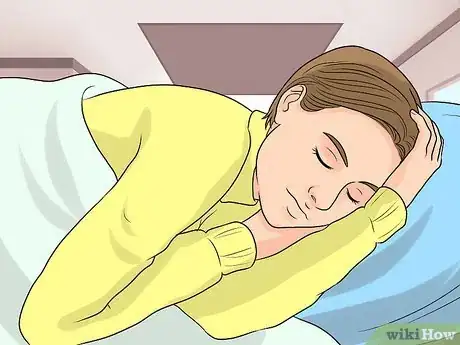






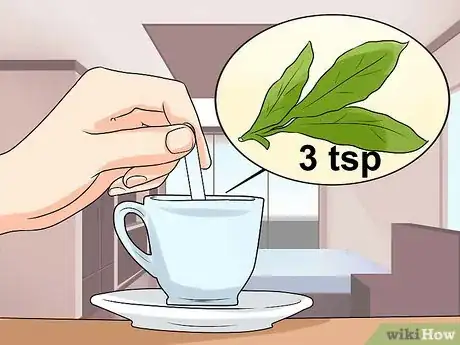



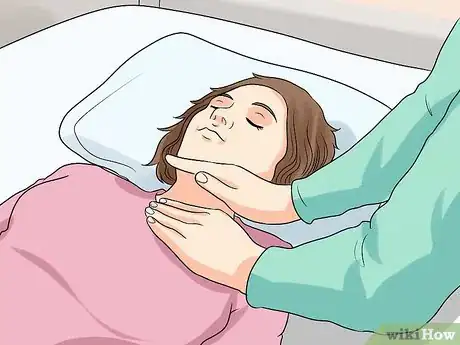

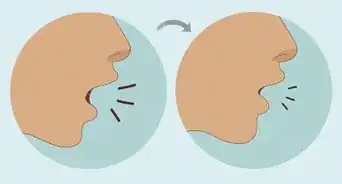
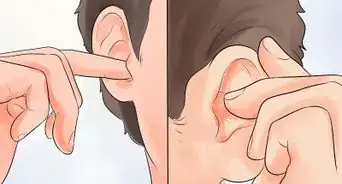
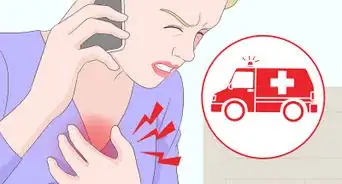

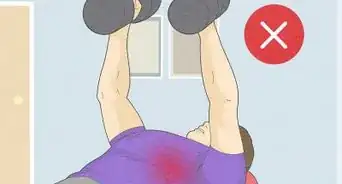

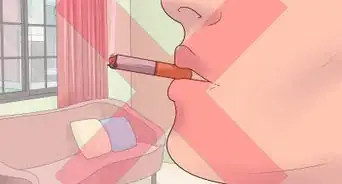















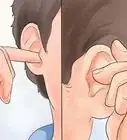
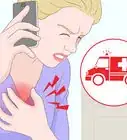



































Medical Disclaimer
The content of this article is not intended to be a substitute for professional medical advice, examination, diagnosis, or treatment. You should always contact your doctor or other qualified healthcare professional before starting, changing, or stopping any kind of health treatment.
Read More...